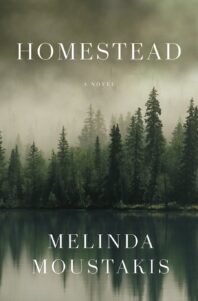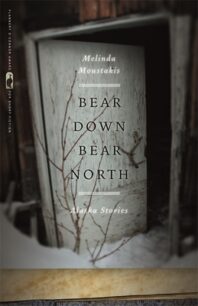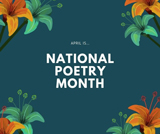To read the work of Melinda Moustakis is to be transported to the rushing Kenai River, to a chum line at a cannery, to a rough-hewn cabin on a homestead—and to be swept away by beautiful and startling language and scenery. Alaska is Moustakis’s imaginative territory and the setting of much of the family history that inspires her fiction. Her debut collection, Bear Down, Bear North: Alaska Stories, winner of the Flannery O’Connor Award and a National Book Award 5 Under 35 selection, features three generations of Alaskans.
Homestead, her moving debut novel, is also based on family lore. The book chronicles the swift marriage and difficult homesteading years of Marie and Lawrence near Point Mackenzie in the late 1950s. Newcomers to Alaska, Lawrence is a traumatized veteran of the Korean War, and Marie, a motherless young woman desperately in need of a new start. They try to build a life together in a wilderness to which they were not born, that belonged to others long before them, and that will be handed over to future generations.
The book has received numerous rave reviews. Publisher’s Weekly praises the “wondrous descriptions of the back-breaking labor involved in clearing and farming the land, and of the region’s vast beauty” that “will make readers feel like they’re there.” The novel is more than a love story, more than a historical retelling. Homestead delves into questions of ownership and claim-staking—and it does so through breath-taking storytelling.
 In July, through a series of emails and conversations, I had the pleasure of interviewing Melinda about the process of writing Homestead and what she is working on now.
In July, through a series of emails and conversations, I had the pleasure of interviewing Melinda about the process of writing Homestead and what she is working on now.
Swearingen: What inspired you to write Homestead?
Moustakis: The two main characters of the book, Lawrence and Marie, are based on my grandparents. Some years ago I asked my grandmother if she would allow me to interview her while we walked around the property she homesteaded with my grandfather in Point MacKenzie, Alaska. She told me how they met in Anchorage and very quickly got married and then became homesteaders. They spent their first winter as newlyweds living on an old school bus, a 1945 International Harvester, waiting for winter to pass so they could build a cabin. That cabin still stands. Two important things stuck with me during our conversation. One is that she said something like, “God made the trees and men make the kindling,” which struck me as the first line of something, and this became the first line of the book. Another is her talking about the work of being out there, the laundry, and she showed me an old washing machine, a Maytag with a crank handle. I began to think of the labor she had done, the work, and how to make the work of women visible.
Swearingen: Despite how stoic Lawrence and Marie can be, you manage to create a great deal of intimacy between the reader and the characters. Every sentence is crystalline. What was it like to write and revise this book?
 Moustakis: I have to write in silence to hear the voice of a book, the rhythms and the cadences. So I often wear noise protection ear muffs to block out sound and believe I borrowed this from the writer Rick Bass who said he did this in an interview. The writing of Homestead took many years. After a few false starts I finally had messy pages written in 2014 for this book. I rewrote the first chapter over and over until it clicked, and much to my surprise, the present tense took over, and not in first-person point of view, but a third-person point of view. It was as if the landscape of the homestead had a perspective and was able to channel the perspectives of Marie and Lawrence.
Moustakis: I have to write in silence to hear the voice of a book, the rhythms and the cadences. So I often wear noise protection ear muffs to block out sound and believe I borrowed this from the writer Rick Bass who said he did this in an interview. The writing of Homestead took many years. After a few false starts I finally had messy pages written in 2014 for this book. I rewrote the first chapter over and over until it clicked, and much to my surprise, the present tense took over, and not in first-person point of view, but a third-person point of view. It was as if the landscape of the homestead had a perspective and was able to channel the perspectives of Marie and Lawrence.
I found writing a novel to be much more difficult than writing a story collection. There is so much to keep track of, what happens before, what happens after, so many threads, the arc of the entire book, as well as the arc of each chapter. Revision was a matter of layering, and one of the biggest and most important layers came in the last year of writing the book and that was adding one hundred pages of interiority throughout. I also remember wondering how the book ended, and one day, I figured out that what had been the second chapter for years might be the ending. And I cut the chapter and moved it to the end and suddenly felt as if I had magically turned the book inside out.
Swearingen: That had to be something, to discover that your ending had been with you all along. Speaking of your story collection, Bear Down, Bear North is also set in Alaska. What is it about Alaska that makes you return to it again and again as a setting? Do you have plans for other Alaska books?
Moustakis: I think I will always be writing about Alaska where so many of the family stories I know take place. I’m often tying together my own Alaska experiences with my family stories, and resisting broader mythologies, especially of Alaska being a pristine wilderness or “The Last Frontier” when Alaska Natives have lived there for thousands of years. I’d like all of my books to be speaking to each other, as the story collection is about three generations of a homesteading family and the novel delves into the first generation and how these two people met and started homesteading. I have so much more to say and I’m in the planning and researching stage of writing the sequel to Homestead.
Swearingen: Homestead is set in the distant past, during the early Cold War years. How challenging was it for you to recreate this time period? How did you overcome those challenges?
Moustakis: I never thought I would write a book set in the 1950s. There was a lot of research that went into trying to portray the time period, about the long road to statehood, segregation and discrimination in Anchorage, Alaska Native history, the 1918 flu pandemic, the Great Depression, the droughts, the Cold War, Korean War, World War II, women’s maternity health and the polio epidemic. You can spend hours researching one detail that might make it into one sentence, but there is satisfaction in getting that one detail right. And of course there is the frustration of not being able to use all of your research in your project.
Swearingen: How did your research on the history of Alaskan statehood and homesteading influence the narrative?
Moustakis: I’m still learning about the history of homesteading in Alaska as I begin to think about the sequel to this novel. I discovered less than 1% of the land in Alaska was homesteaded, but that percentage was a part of the large amount of land claimed by the Federal government and essentially stolen from Alaska Natives. Another discovery was that an even larger amount of land was stolen by the new state government. As Marie and Lawrence learn more about each other and themselves and their life in Point MacKenzie, they learn more about Alaska’s history, which complicates their ideas of land ownership. They are outsiders and have romantic notions of homesteading that were popular at the time. Marie, like my grandmother, is from Texas and went to visit her sister in Anchorage and ended up staying. Lawrence, like my grandfather, had moved to Alaska from Minnesota. They also have romantic notions of statehood and how it will benefit them. So I wanted to include characters who would have differing opinions about statehood based on this history of U.S. governments taking land without regard for the indigenous populations who had always lived there.
Swearingen: Though the story centers on Marie and Lawrence, you populate the book with fascinating secondary characters like Marie’s sister and brother-in-law, who help to open the story to the larger world beyond the homestead. How did you approach the world-building and populating of this book?
Moustakis: I wanted to add in real people who Lawrence and Marie might have encountered at that time. So Peggy and George Brown did start and own The Lucky Wishbone restaurant, and my grandmother remembered going there. The place is actually still open and I had dinner there with my grandmother once. Walt Teeland owned Teeland’s Country Store in Wasilla. Shem Pete, who was a respected Dena’ina Athabascan elder and storyteller, lived in Nancy Lake, about thirty-four miles from the Knik-Fairview area and he travelled widely, so having my characters meet him through a small business owner in Knik was not impossible. I would look at newspapers to find possible news that characters would have read in the newspaper and talk about in a bar. It was exciting to find a detail like the launch of Sputnik and have a character mention it. Each chapter moves forward a month so I was always taking stock of what could happen in the daily life, in that season, what animals might be around and what they might be doing, what was happening to the trees, and in the sky.
Swearingen: The trees and the sky and the animals. Your descriptions of the natural world are one of the many delights of Homestead. Melinda, It’s been such a pleasure to read your work over the years. Thank you for speaking with me today and giving us a peek into your writing process.
RACHEL SWEARINGEN is the author of How to Walk on Water and Other Stories. She lives in Chicago.




“Kudos on Homestead!
True authenticity arises from meticulous research and a connection to the often-overlooked elements right before us. Homestead masterfully captures this authenticity, drawing readers into a narrative that delves deeper into the intricacies of the story. I eagerly anticipate the unfolding chapters of your writing career, as brilliance undoubtedly awaits. Congratulations on a captivating journey with Homestead!”